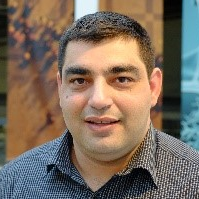Internet-of-Things for Precision Agriculture (IoAT)
A special issue of Sensors (ISSN 1424-8220). This special issue belongs to the section "Internet of Things".
Deadline for manuscript submissions: closed (3 June 2019) | Viewed by 102797
Special Issue Editors
Interests: artificial intelligence; internet of things
Special Issues, Collections and Topics in MDPI journals
Interests: wireless sensor networks; Internet-of-Things; machine learning; artificial intelligence
Special Issues, Collections and Topics in MDPI journals
Interests: machine learning; partial discharge monitoring; wireless technologies; data analytics
Special Issues, Collections and Topics in MDPI journals
Special Issue Information
Dear Colleagues,
Precision agriculture is core to satisfying the ever-increasing worldwide demand for food products of good quality, whilst allaying the societal concerns over animal welfare and reducing heavily the load on environmental resources. The principle is that if the needs of animals and crops are satisfied at the highest granularity, then farmers and the supply chain including consumers will benefit. Over the recent past, the sector has been subject to an increasing drive towards efficiency and performance enhancement to improve sustainability against a backdrop of increasing demand and the volatile trading environments that may emerge as a consequence of political change.
A direct consequence is that the farmers have less time to execute traditional practices and are becoming increasingly reliant on technology. Thus, there is a growing range of opportunities for the delivery of precision farming solutions through the integration of a mix of hardware and software technologies. In turn, the evolution to new business models based on provisioning a range of services to the agricultural community becomes possible, fueling further the ready uptake of technology for the benefit of all operating within the supply chain.
The solutions required to support this evolution harness a number of technologies that follow Internet of Things (IoT) principles. IoT is a platform that allows a network of devices to communicate, gather data and process information collaboratively in the service of individuals or processes. The solutions rely on engineering data driven by consideration of the impacts in order for the derived product/application/service to be not only fit-for-purpose but can also be easily deployed and maintained with a minimum of perturbation to a sector that has followed entrenched practices for many years. These platforms generate large amounts of data in a variety of formats and is ‘Big’ comprising many different streams of single stranded data, but markedly different from the ‘Big Science Data’ sets routinely encountered in drug development and oil exploration. The data can then be translated into actionable information through machine learning, artificial intelligence, statistical and other advanced techniques, models and methods, to create value for the spectrum of stakeholders across the agricultural supply chain, in so doing optimising production and sustaining the security of the food supply.
The Special Issue will capture the latest innovations from fundamental scientific concepts to commercially robust IoT-inspired solutions (Internet of Agricultural Things—IoAT) relevant to the development and adoption of precision agriculture methodologies. The Guest Editors invite submissions that range from new sensors through cloud-based computing to data-driven applications/services. Topics of interest include, but are not limited to, the following themes:
- Intelligent Sensing Technologies
- Data Architectures and Management
- Edge Computing
- Network and Communications Technologies
- IoT Platform Integration
- Machine Learning and Artificial Intelligence
- Emerging Applications/Services and Cloud Analytics
- Information Visualisation
- Security, Privacy and Trust
- Inter-Operability and Standards
- Emerging Business Models
Prof. Ivan Andonovic
Prof. Craig Michie
Dr. Christos Tachtatzis
Guest Editors
Manuscript Submission Information
Manuscripts should be submitted online at www.mdpi.com by registering and logging in to this website. Once you are registered, click here to go to the submission form. Manuscripts can be submitted until the deadline. All submissions that pass pre-check are peer-reviewed. Accepted papers will be published continuously in the journal (as soon as accepted) and will be listed together on the special issue website. Research articles, review articles as well as short communications are invited. For planned papers, a title and short abstract (about 100 words) can be sent to the Editorial Office for announcement on this website.
Submitted manuscripts should not have been published previously, nor be under consideration for publication elsewhere (except conference proceedings papers). All manuscripts are thoroughly refereed through a single-blind peer-review process. A guide for authors and other relevant information for submission of manuscripts is available on the Instructions for Authors page. Sensors is an international peer-reviewed open access semimonthly journal published by MDPI.
Please visit the Instructions for Authors page before submitting a manuscript. The Article Processing Charge (APC) for publication in this open access journal is 2600 CHF (Swiss Francs). Submitted papers should be well formatted and use good English. Authors may use MDPI's English editing service prior to publication or during author revisions.
Keywords
- Precision Agriculture
- Internet-of-Things Technologies
- Data-Driven Applications/Services
- Distributed Intelligent Sensor Networks and Applications
- Low Power Wireless Connectivity
- Edge Computing
- Machine Learning
- Artificial Intelligence
Benefits of Publishing in a Special Issue
- Ease of navigation: Grouping papers by topic helps scholars navigate broad scope journals more efficiently.
- Greater discoverability: Special Issues support the reach and impact of scientific research. Articles in Special Issues are more discoverable and cited more frequently.
- Expansion of research network: Special Issues facilitate connections among authors, fostering scientific collaborations.
- External promotion: Articles in Special Issues are often promoted through the journal's social media, increasing their visibility.
- Reprint: MDPI Books provides the opportunity to republish successful Special Issues in book format, both online and in print.
Further information on MDPI's Special Issue policies can be found here.








